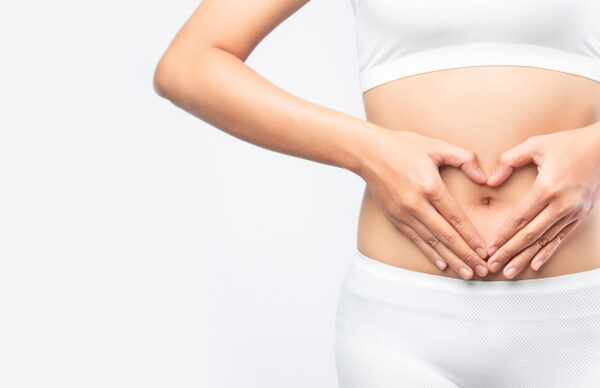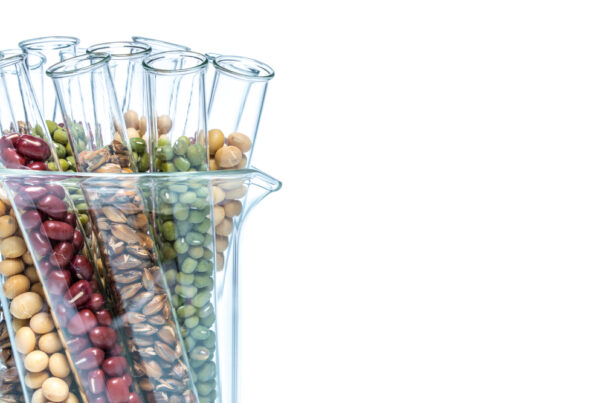According to a 2017 IUCN report microplastics make up a larger source of marine plastic pollution than the visible plastic that we see in our oceans or in the stomachs of fish and birds (Boucher, 2017). Because of the really small size of these plastics they manage to escape water filtration systems and then end up in our water and food supply. So microplastics end up being everywhere – in our soil, air and our oceans.
But did you know that even your cup of tea may be exposing you to a higher amount of plastic consumption compared to other foods?
According to researchers at McGill University in Canada plastic tea bags are shedding as much as 11.6 billion shards of microplastic and 3.1 billion of even smaller nanoplastic particles into your cuppa (Hernandez, 2019). This means that one cup of tea contains about 16 micrograms of plastic per cup. In the experiment the actual tea leaves were removed from the teabag before they were boiled, so this is just the teabag we are talking about. Both cut and uncut teabags were used to make sure that the cutting process didn’t release more microplastics into the tea, and four different brands of tea were tested in this particular study.
It is important to note that the thermoplastic “addition polymer” called polypropylene is used to seal teabags. Polypropylene is used to make packaging and plastic parts for various industries.
Different Forms of Plastic
Plastic is a polymer that can either consist of identical units that are just continuously repeated (homopolymer) or different sequences of units (copolymer). It can also be classified into two different types:
- Thermoplastics – these plastics can soften when exposed to heat and can be molded.
- Thermosets – these plastics do not soften with heat and cannot be molded.
The polypropylene used to seal teabags is a thermoplastic which will soften with heat and in brewing tea which could increase your exposure to microplastics.
The most common plastics that are used in industry are:
- Polyethylene (PE)
- Polypropylene (PP)
- Polyvinyl chloride (PVC)
- Polystyrene (PS)
- Polyurethane (PUR)
- Polyethylene terephthalate (PET)
Natural polymers or biopolymers also exist which are polymers that are produced by living organisms and make up polynucleotides (RNA and DNA), polypeptides (short chains of amino acids) and polysaccharides (carbohydrate structures), but can also exist in nature in the form of rubber, melanin, lignin and cellulose. However, biopolymers are biodegradable and is readily broken down into carbon dioxide and water and pose no health risks whatsoever.
How Do Microplastics Enter Our Environment?
Microplastics are not a specific kind of plastic, but rather very small pieces of plastic that can come from sources such as:
- Microfibers from clothing
- Microbeads found in exfoliators
- Plastic pellets
- Degradation of larger plastic products such as electronic equipment or car tires
- Degradation of drink bottles and food packaging
- Degradation of fishing nets and plastic bags
Primary microplastics is defined to be plastics equal to or less than 5 mm, but can degrade down to 1.6 micrometres in diameter (Conkle, 2017). Nanoplastics are off course a lot smaller around 100 nanometres in length.
How Much Plastic Are You Eating?
It is estimated that humans currently eat an average of 5 grams of plastic each week which is the equivalent of a credit card weight in plastic. However, this number can also differ depending on the country you live in and off course the type of foods that you may be eating.
According to Worldwatch North Americans are consuming about 100 kg/person of plastic each year as opposed to 20 kg/person in Asia (World Watch Institute, n.d.).
So which foods are more likely to be contaminated?
Table salt is a food source that has a high microplastic content containing about 0.005 micrograms of plastic per gram of salt.
Seafood contains microplastics with about 11 fish species from 25 commercial species tested testing positive for these plastics (Rome, 2016). Cod contains microplastics more often than herring, but herring generally contains higher amounts of microplastics (Lenz, 2016).
Water contains microplastics with untreated tap water containing higher amounts than treated tap water, bottled water containing higher amounts than tap water, and surface water from freshwater sources containing the least amounts of microplastics (Koelmans, 2019).
Shellfish consumption was shown in one study to increase microplastic consumption to 11,000 microplastic particles per year as opposed to 1,800 microplastic particles in those who consume low amounts of shellfish (Van Cauwenberghe, 2014).
Even beer has been found to contain microplastics with 4.05 particles per liter. It is estimated that consuming one beer a day on average will expose you to 520 particles per year. Interestingly plastic concentrations in beer were found to be higher than the municipal water used to make the beer which would indicate that plastics are getting in through the brewing process or packaging (Kosuth, 2018).
Below are some foods that have been studied and shown to contain microplastics but these will undoubtedly also be found in most if not all of our food in various amounts.
- One tea cup = 16 micrograms
- One gram of salt = 0.005 micrograms
- Cod
- Herring
- Mackerel
- Shellfish
- Beer
- Honey
- Drinking water
- Mineral water
Health Risk or Not?
Astonishingly the World Health Organisation (WHO) last month (at the time of writing in 2019) made a statement that microplastics “don’t appear to pose a health risk at current levels”. This is despite very limited information currently available and that more research was needed on this ‘new’ form of plastic exposure.
According to the researchers (Tufenkji) at McGill University who did the tea study there does seem to be some detrimental effects on health. They exposed water fleas to the contaminated water and even though it did not kill the water fleas it “did cause significant behavioural effects and development malformations” (Vaughan, 2019).
In fact, there is plenty of evidence that chronic microplastic exposure cannot be good for your health.
Rat studies where rats were fed low dose or high dose plastic compounds have shown transgenerational health effects in all three generations after exposed rats were allowed to breed (Manikkam, 2013). Some of the phenotypical effects that were noticed in this particular study include:
- Testicular and ovarian disease
- Reduced and abnormal sperm
- Primordial follicle loss and reduced ovarian follicle reserve
- Polycystic ovarian disease (PCOS)
- Tumours in breast tissue, skin and small intestine
- Obesity
But also less severe diseases and symptoms we see more commonly such as:
- Constipation
- Swollen intestinal lymph nodes
- Stomach abnormalities
- Sinusitis
- Tremors
It makes you wonder how many of these commonly occurring disorders and symptoms are caused by microplastic exposure.
It has long been known that plastics act as endocrine disruptors with associations to many chronic diseases (Endocrine Disruptors, 2019) and it should come as no surprise that the decline in fertility rates in both men and women over the last 50 years or so is likely as a result of plastic exposure. So it appears that microplastics are playing a much larger role here and is also a likely cause of many other chronic diseases that have increased over the last 50 years such as metabolic syndrome and cancer.
Testing Positive For Plastics
As clinicians we often find metabolites associated with plastic exposure in test results of clients. People are often surprised how that could be as they don’t use plastic containers for cooking and don’t drink out of plastic bottles but rather use glass or stainless steel. They have already cleaned up their home environment in this way.
Microplastics could be a way that plastics are still finding their way into our bodies even though we are not ‘microwaving in tupperware’ anymore. With even the best of intentions, plastics could still be making it into your food chain without you even knowing.
CONCLUSION
Don’t just think about the plastic you see such as plastic water bottles or containers. Keep in mind other forms of plastic that we don’t often consider such as plastics in teabags, lids (think coffee cup lids) and others when choosing brands or forms of food to buy.
I think we always expected to find microplastics in the ocean and seafood, but the fact that we are finding microplastics in even honey and salt is disconcerting and illustrates what a huge environmental problem this has become and will continue to be for many years to come unless we find ways to eliminate it.
It is also concerning to see that health effects can be carried through to subsequent generations and influence gene expression. Maybe the increasing health problems we see today is a result of three or four generations ago and just progressively getting worse.
So it may be time to consider looking into microplastic exposure as a possible cause for a chronic condition that you may be suffering from and have not had much success in treating.
And lastly, it may be a good idea to ditch the teabags, buy yourself a teapot and start brewing some organically grown tea leaves instead.




